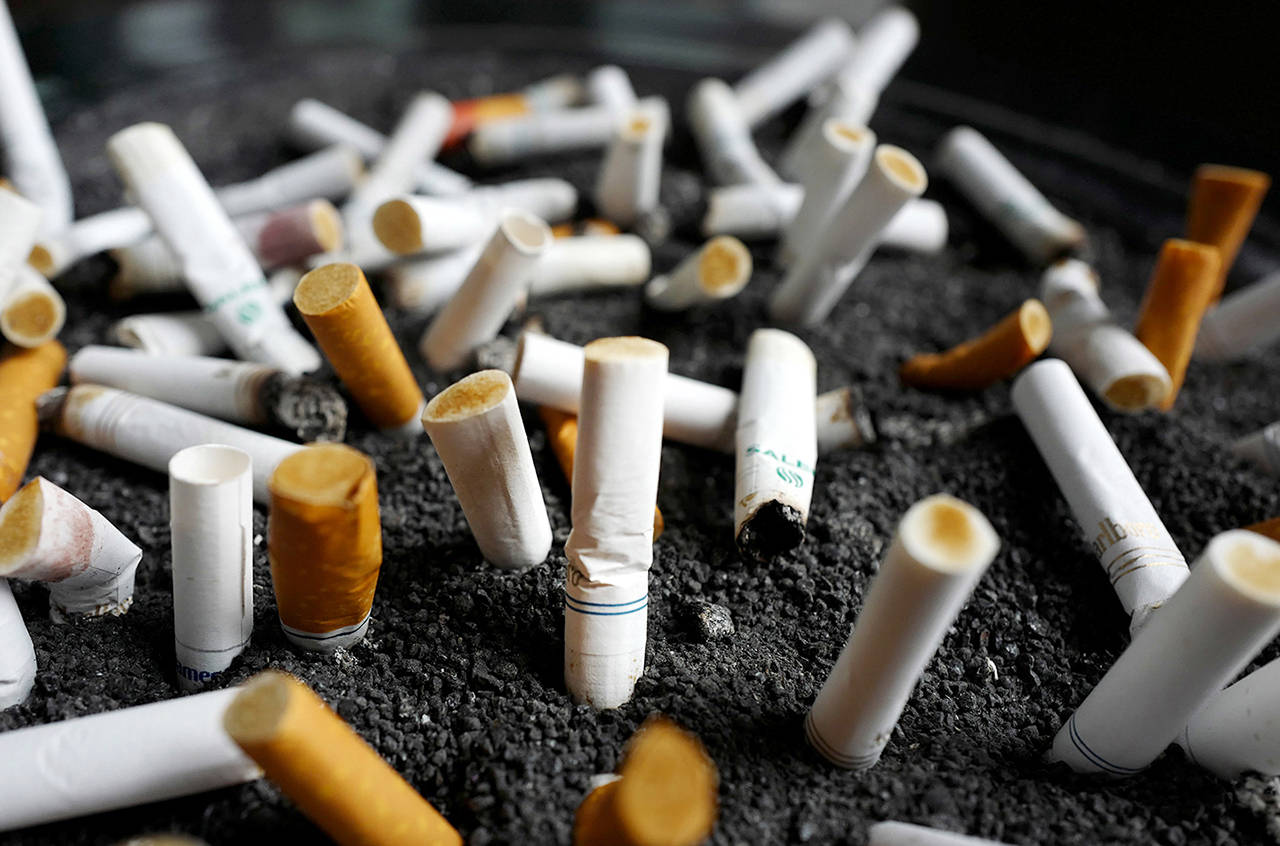By The Herald Editorial Board
It’s been 19 years since a historic settlement — one that was negotiated by then-Washington state Attorney General Chris Gregoire and four other state attorneys general — secured more than $300 billion from the U.S. tobacco industry to reimburse all 50 states for the money spent to treat Medicaid patients for smoking-related illnesses.
Gregoire, at the time of the settlement, said the annual payments to states were intended in part to change state policy regarding tobacco and smoking by funding enforcement, cessation and prevention programs — to make it difficult especially for youths to buy cigarettes and “silence the advertising and marketing campaigns aimed at kids.”
Nineteen years later, Washington state — one of five states most responsible for the settlement — is among the bottom tier of states who use the annual payments for programs to prevent youths from starting smoking and helping smokers quit. And the tobacco companies are outspending the states as they continue to market their products, drowning out what messages the states manage to get out.
A recent report by the Campaign for Tobacco-Free Kids shows that combined the states will collect a total of $27.5 billion from the settlement and state taxes this year, but will spend less than 3 percent of it — $721.6 million — on prevention and cessation programs.
The numbers are bleaker for Washington state. Of the $563 million that the state will receive in 2018 from the settlement and its $3.02-a-pack tax on cigarettes, it has budgeted only $1.4 million for youth prevention and cessation programs. The federal Centers for Disease Control and Prevention recommends that Washington state should have budgeted $63.6 million — about 11.3 percent of its tobacco revenue — for those programs, but is spending only 2.2 percent of the CDC’s recommendation, ranking it 42nd in the nation.
Since 2012, Washington state has not budgeted more than $2.5 million for those programs, and it spent just $600,000 in 2016. The funding allocated has never matched the CDC recommendation, but held steady at $27 million annually from 2007-09.
Meanwhile, tobacco companies spent an estimated $89.1 million in 2015, the Campaign for Tobacco Free Kids report shows, dwarfing the $1.4 million the state will spend trying to counter tobacco company ads and marketing. For every dollar the state will spend on prevention and cessation programs, the tobacco companies will have spent more than $63 in Washington state.
We know that Washington state lawmakers have a difficult time with their dependence on revenue from tobacco taxes. They admitted as much less than two years ago.
When state Attorney General Bob Ferguson and lawmakers proposed raising the legal age to purchase tobacco from 18 to 21 in 2016, the legislation was stubbed out in the House appropriations committee because lawmakers there couldn’t figure out “how to pay” for the anticipated loss in tobacco tax revenue — $22 million for the 2017-19 budget cycle — caused by the increase in the legal age.
But that math doesn’t take into account the estimated 8,300 deaths caused each year in Washington state by smoking-related illnesses or the $2.81 billion in annual health care costs in the state caused by tobacco products.
The pressure is mounting for further cuts. At the federal level, Congress is considering a 25 percent reduction in the CDC’s effective Tips From Former Smokers media campaign, which has helped an estimated half-million smokers quit and saved some 50,000 lives since it began in 2012.
The Campaign for Tobacco-Free Kids, joined by the American Lung Association, the American Cancer Society and others, also has called for the federal Food and Drug Administration to fully use the authority it was granted by Congress in 2009 to regulate tobacco products, including limiting nicotine levels in cigarettes to non-addictive levels, requiring graphic warnings on tobacco packs and prohibiting the use of menthol and other flavorings that have been shown to help them appeal to youths.
At the state level, lawmakers need to reconsider their budget priorities and — even as they look to fill a $1 billion hole in education spending — better fund the anti-smoking programs as they were intended in the 1997 settlement. As well, they should increase the smoking age and recognize the legislation not as a loss in revenue but a gain in lives and reduction in health care spending. Bills to raise the purchase age have been refiled for the legislative session that starts next month.
Prevention and cessation programs have seen success. Nationwide, the number of adults who smoke has dropped from about 42 percent of the population in 1965 to about 15 percent in 2015, and from 28 percent of high school students in 2000 to about 8 percent in 2016. The statistics are even a little better for Washington state; 14 percent of adults and 6.3 percent of high school students smoke.
But those recent improvements don’t justify the radical tailing off of support for programs that counter the message from tobacco companies. If anything, it calls for greater funding, because the youths and adults that those last few percentage points represent could be the toughest to reach.
Judging by what they’re spending, the tobacco companies already know this.
Talk to us
> Give us your news tips.
> Send us a letter to the editor.
> More Herald contact information.

























